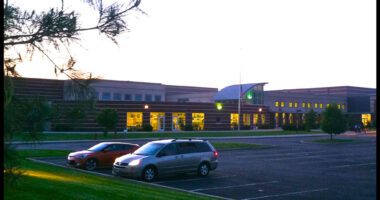By 1808Delaware
Why do school districts like Olentangy ask voters for levies? What determines how much state funding a school receives? And how does your property value impact your child’s education?
These questions are at the heart of a video recently released by Ryan Jenkins, Treasurer of Olentangy Local Schools. In a clear and informative overview titled “School Funding 101,” Jenkins breaks down how Ohio’s school funding system works—and how it affects Olentangy’s budget today and in the future. That video can be viewed below.
How Ohio Funds Its Public Schools
Every two years, Ohio’s state legislature passes a new budget that affects everything from road repair to public education. As part of this budget, the state also revisits the formula it uses to distribute money to public school districts.
This formula isn’t just about dividing a pot of money. It’s a complex system that determines how much funding each district gets, based on factors like enrollment numbers and the wealth of the local community. While the exact details can shift with each new budget cycle, the framework stays mostly consistent.
Local Wealth = Local Responsibility
A key feature of the formula is the “local share”—that is, the amount a school district is expected to raise through local taxes. The higher the property values and household incomes in a district, the more the state expects the local community to contribute.
In Olentangy’s case, recent property reappraisals in 2023 showed a rise in home values across the district. While this might sound like good news, it triggered a decrease in property tax rates, keeping overall tax collections roughly the same. Still, the state funding formula interprets the rising home values as an indication that Olentangy can fund more of its schools locally, and thus reduces its share of state aid.
The Role of the Fair School Funding Formula
Since its implementation, the Fair School Funding Formula has been a game-changer for many Ohio districts. It increased state funding across the board, including for Olentangy, where the state share of per-pupil funding has risen to between 17% and 25% in recent years.
Jenkins emphasized that this additional funding has been essential in helping the district avoid unnecessary levy requests and operate efficiently. The district strongly supports the continued use and full phase-in of this formula moving forward.
Why the State Share Is Shrinking
Despite this progress, Olentangy faces new funding challenges. As property values rise, the formula sees less need for state support. That means Olentangy’s state share is trending downward—and may soon hit the statutory minimum of just 10%.
That’s why Jenkins and district leaders are working closely with lawmakers. Their goal? Ensure that Olentangy continues to receive at least 20% state funding per student, which they believe is necessary to maintain educational quality and avoid placing too much of the burden on local taxpayers.
What’s Next—and How You Can Learn More
Olentangy Schools are at a pivotal point. As the community grows and property values climb, the state’s funding formula will continue to shift more financial responsibility to local taxpayers.
If you’re curious about how this affects your school taxes—or what you can do to support equitable funding—Treasurer Ryan Jenkins invites residents to reach out. You can contact him directly at ryan_jenkins@olsd.us.










